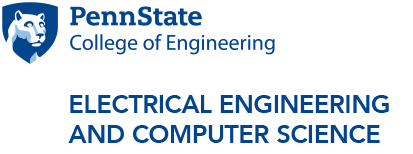Epitaxial growth of 2D semiconducting transition metal dichalcogenides – An enabling technology for large area devices
Abstract: Monolayer and few-layer semiconducting Transition Metal Dichalcogenides (TMDs), exemplified by materials like MoS2 and WSe2, have garnered increasing interest for next generation gate-all-around nanosheet devices and heterogeneous integration with silicon CMOS technology. The interest in TMDs arises from their ultra-thin body nature, however, realization of high-performance devices requires advances in TMD synthesis to provide wafer-scale films that can be readily integrated into devices via either direct growth or layer transfer methods. Our work has focused on the development of metalorganic chemical vapor deposition (MOCVD) as a manufacturing-compatible approach for wafer-scale semiconducting TMDs. The TMDs are grown epitaxially on c-plane sapphire by MOCVD at elevated temperatures (>800 °C) to obtain high crystal quality. Pre-annealing the sapphire surface in H2S or H2Se modifies the nucleation behavior of the TMDs on sapphire which is attributed to passivation of dangling bonds on the sapphire surface. Passivation of step terraces can drive nucleation to occur preferentially at step edges on sapphire leading to unidirectional domains and a significant reduction in mirror twin defects. In situ spectroscopic ellipsometry is demonstrated to be an effective real time monitor of TMD growth even at the sub-monolayer level which can be exploited to track surface coverage as a function of time under varying growth conditions. The ability to precisely control and modulate precursor flux during growth is used to synthesize in-plane heterostructures that enable localized exciton confinement and emission. Applications for wafer-scale TMD monolayers in nanoelectronics, sensing and photonics will be discussed.
Bio.: Joan M. Redwing received her B.S. in Chemical Engineering from the University of Pittsburgh and her Ph.D. in Chemical Engineering from the University of Wisconsin-Madison. Dr. Redwing joined the faculty of the Department of Materials Science and Engineering at Penn State University in 2000. She holds an adjunct appointment in the Department of Electrical Engineering and is a member of the Materials Research Institute. She currently serves as Director of the 2D Crystal Consortium (2DCC), an NSF-funded Materials Innovation Platform national user facility. Dr. Redwing’s research interests are in the general area of electronic materials synthesis and characterization with a specific emphasis on semiconductor thin film, nanowire and 2D materials synthesis by metalorganic chemical vapor deposition. She currently serves as vice president of the American Association for Crystal Growth, is an associate editor for the Journal of Crystal Growth and is the North American regional editor for the journal 2D materials. She is a fellow of APS, MRS and AAAS and was a Fulbright Scholar to Sweden in 2016. She is a co-author on over 300 publications in refereed journals and holds 8 U.S. patents.
Event Contact: Iam-Choon Khoo



